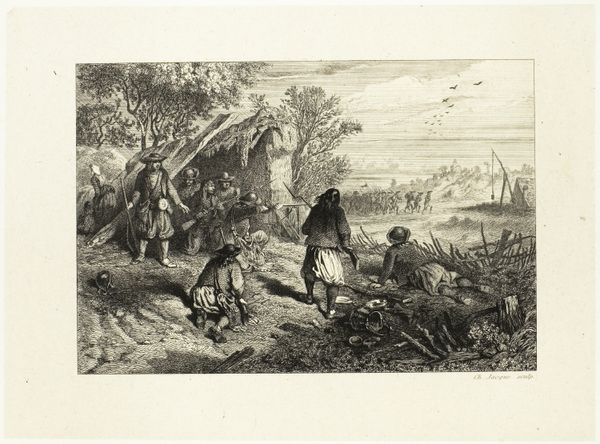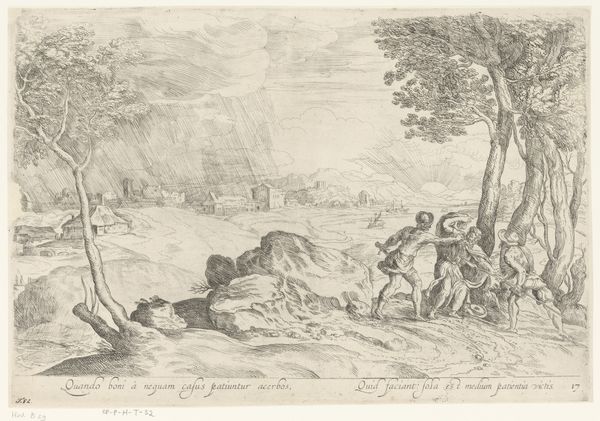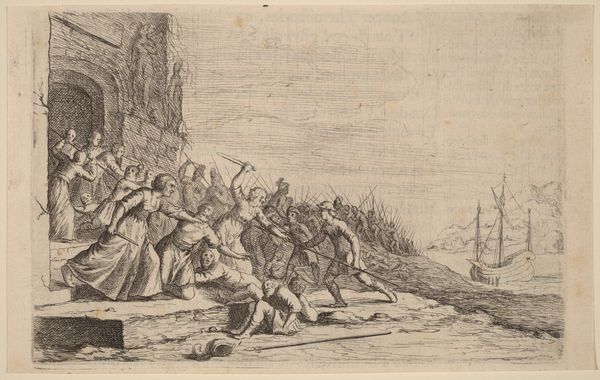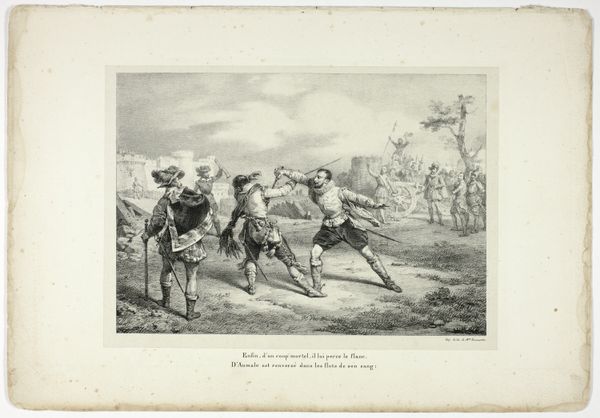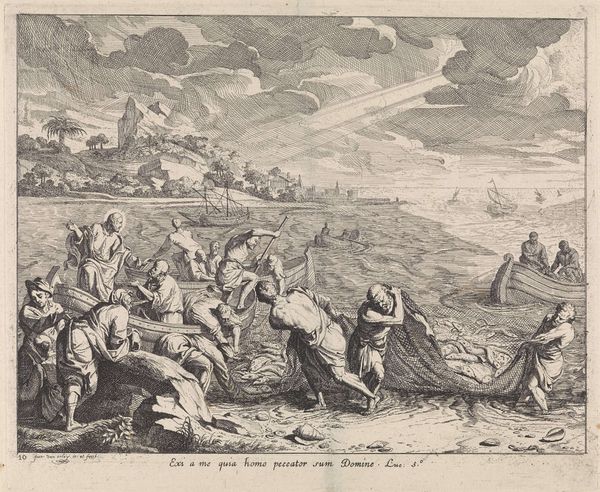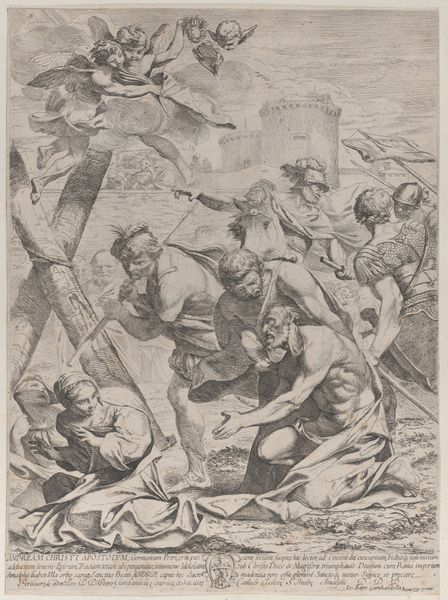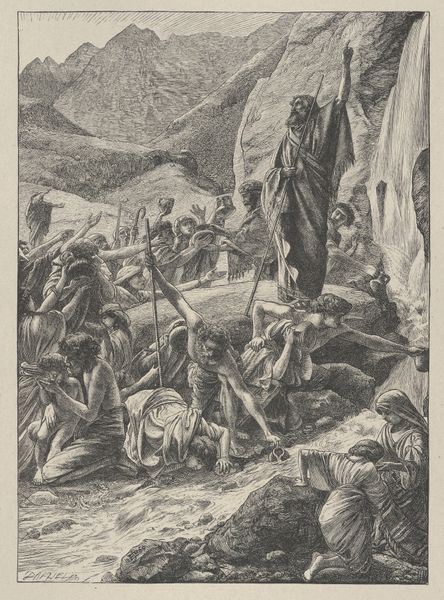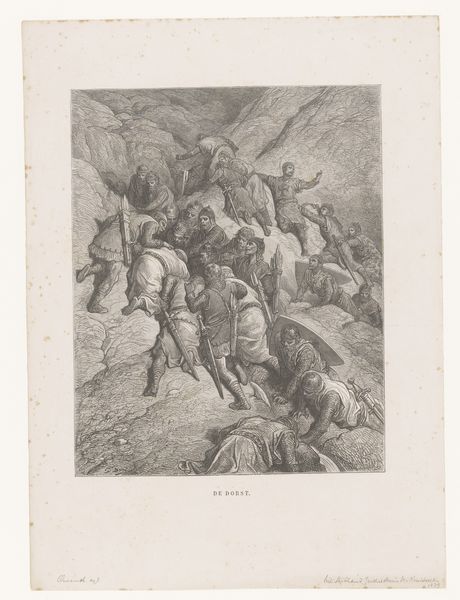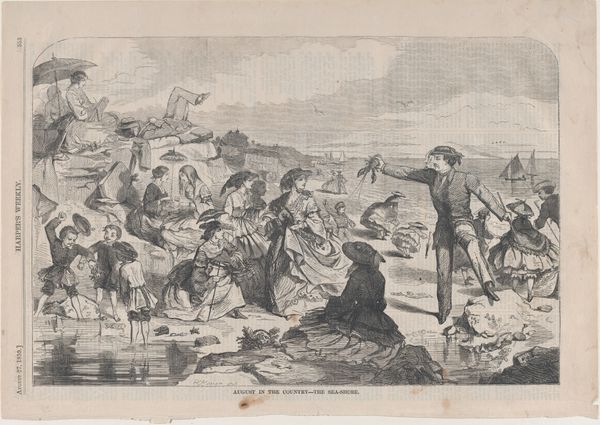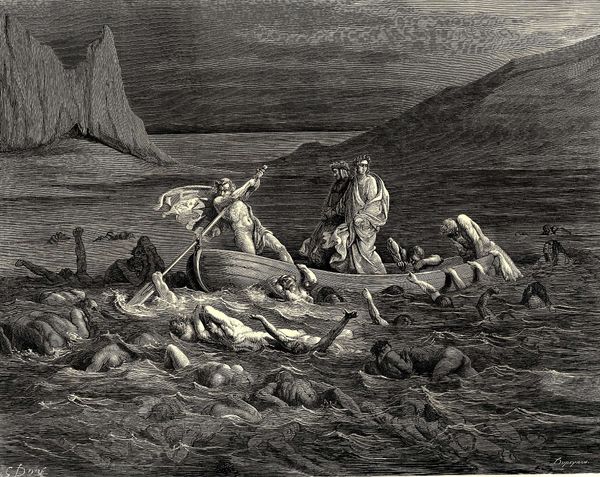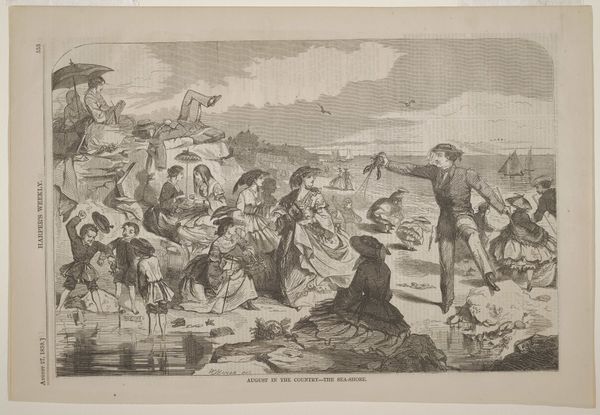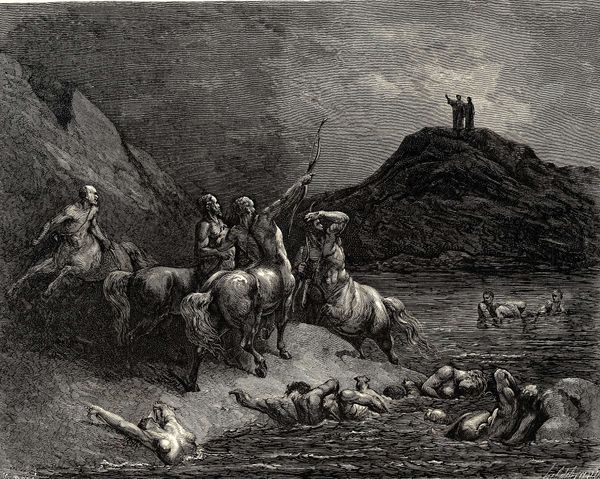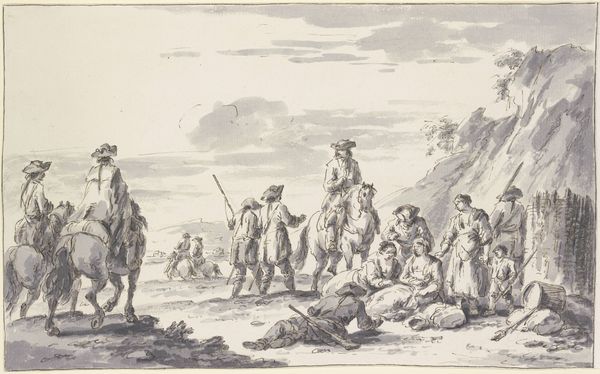
drawing, print
#
pencil drawn
#
drawing
#
light pencil work
# print
#
pencil sketch
#
charcoal drawing
#
charcoal art
#
pencil drawing
#
limited contrast and shading
#
pencil work
#
graphite
#
pencil art
Dimensions: Sheet (Trimmed): 9 in. × 12 11/16 in. (22.8 × 32.3 cm)
Copyright: Public Domain
Curator: This is a print called "Men Thrashing." We believe it was created sometime between 1800 and 1900 by an anonymous artist. Editor: It's stark. The composition is overwhelmingly horizontal, emphasizing labor, and the limited contrast gives it a relentless quality. One can almost feel the weight of their collective burden in this image. Curator: Precisely. Observe how the figures are clustered in the center, a convergence of line and form indicative of both unity and exertion. Note also the contrast of the organic shapes of nature on the left with the structured, rhythmic gestures of agricultural process occupying the picture plane on the right. This duality gives it an added element of narrative complexity. Editor: Beyond the immediate aesthetic experience, this imagery reminds us of the grueling realities of rural life during that era. These men's work was surely integral to the agricultural economy of the time. How might the lack of a named artist reflect on this socio-economic landscape? Was the artist themself from the working class, or an observer from a different station in society? Curator: Anonymity itself becomes a powerful signifier. It detaches the image from individual artistic ego, aligning it with the collective nature of the labor depicted. Furthermore, the deliberate manipulation of light and shadow through hatching invites scrutiny of depth and surface, foregrounding the meticulous artistry embedded within. Editor: It certainly compels consideration. While visually arresting, “Men Thrashing” serves as an important visual record and prompts further examination of art's role in capturing, commemorating, and sometimes even critiquing society's workforce. Curator: Indeed. And when engaging with it on such a formal level, a new layer of meaning unfolds before us. Editor: It really has given me something to consider as I observe art and think about how our work shapes our communities and history.
Comments
No comments
Be the first to comment and join the conversation on the ultimate creative platform.

